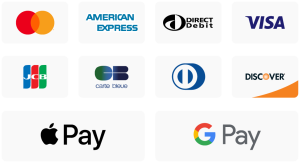[Solved] Include Multiple Scholarly Citations
The purpose of Part 4 is to select a solution to the problem you defined in Part 2 that is grounded in literature and supported by evidence and analysis. To accomplish this task, you will utilize a strategic thinking lens to consider the viability and applicability of the solutions you researched in Part 3 with respect to your selected problem and organizational context. As part of this process, for each solution you researched in Part 3, you will also consider any potential barriers to success in the context of your organization. Thus, after analyzing and reflecting on the potential solutions through the lens of strategic thinking, you will evaluate the viability of the solutions you researched within the context of the information you collected and analyzed in Part 1. Part 4: Select a Solution
Begin with an introduction paragraph explaining what you are going to do in this part. Make a connection between the previous part and this part.
Overview of the Four Solutions
Provide an overview of each of the four solutions from Part 3. One paragraph, approximately 5-6 academic sentences with current scholarly literature.
Advantages (Pros) and Disadvantages (Cons) of Solutions
In this introduction paragraph, gather your evidence and validate your assertions. Provide an introduction regarding the importance of identifying pros and cons of a solution. This should be supported by the literature; one paragraph, approximately 5-6 academic sentences with current scholarly literature.
Solution One: Solution Title
In this opening paragraph, introduce your Solution One. This section should be supported by the current scholarly literature; one paragraph, approximately 5-6 academic sentences.
Pros. Begin your information here. Include 1-2 advantages of selecting this solution to solve your problem.
Cons. Begin your information here. Include 1-2 disadvantages of selecting this solution to solve your problem.
Solution Two: Solution Title
In this opening paragraph, introduce your Solution Two. This section should be supported by the current scholarly literature; one paragraph, approximately 5-6 academic sentences.
Pros. Begin your information here. Include 1-2 advantages of selecting this solution to solve your problem.
Cons. Begin your information here. Include 1-2 disadvantages of selecting this solution to solve your problem.
Solution Three: Solution Title
In this opening paragraph, introduce your Solution Three. This section should be supported by the current scholarly literature; one paragraph, approximately 5-6 academic sentences.
Pros. Begin your information here. Include 1-2 advantages of selecting this solution to solve your problem.
Cons. Begin your information here. Include 1-2 disadvantages of selecting this solution to solve your problem.
Solution Four: Solution Title
In this opening paragraph, introduce your Solution Four. This section should be supported by the current scholarly literature; one paragraph, approximately 5-6 academic sentences.
Pros. Begin your information here. Include 1-2 advantages of selecting this solution to solve your problem.
Cons. Begin your information here. Include 1-2 disadvantages of selecting this solution to solve your problem.
Discussion of Barriers
In this opening paragraph, gather your evidence and validate your assertions. Provide an introduction regarding the importance of identifying barriers/obstacles of a solution. This section should be supported by the literature; one paragraph, approximately 5-6 academic sentences with current scholarly literature.
Solution One: Solution Title
In this opening paragraph, mention the barrier(s) you may face if you implement this solution to solve the problem. Describe how you would address the barrier for your organization. If there were no barriers, how would your organization accept the solution? If there were a barrier, how would you address each barrier? This section should be supported by the literature; one to two paragraphs, approximately 5-6 academic sentences with current scholarly literature.
Solution Two: Solution Title
In this opening paragraph, mention the barrier(s) you may face if you implement this solution to solve the problem. Describe how you would address the barrier for your organization. If there were no barriers, how would your organization accept the solution? If there were a barrier, how would you address each barrier? This section should be supported by the literature; one to two paragraphs, approximately 5-6 academic sentences with current scholarly literature.
Solution Three: Solution Title
In this opening paragraph, mention the barrier(s) you may face if you implement this solution to solve the problem. Describe how you would address the barrier for your organization. If there were no barriers, how would your organization accept the solution? If there were a barrier, how would you address each barrier? This section should be supported by the literature; one to two paragraphs, approximately 5-6 academic sentences with current scholarly literature.
Solution Four: Solution Title
In this opening paragraph, mention the barrier(s) you may face if you implement this solution to solve the problem. Describe how you would address the barrier for your organization. If there were no barriers, how would your organization accept the solution? If there were a barrier, how would you address each barrier? This section should be supported by the literature; one to two paragraphs, approximately 5-6 academic sentences with current scholarly literature.
Summary of Rationale for Selected Solution
In this opening paragraph, begin by explaining which one solution you selected from the above listed four. From the solution you have chosen, identify your reasons for choosing this solution (e.g., it has the fewest organizational barriers, it offers the most benefits, it has been successful in organizations similar to yours). This section should be supported by the literature; one to two paragraphs, approximately 5-6 academic sentences with current scholarly literature.
All sections should include multiple scholarly citations that support your thinking and rationale.

